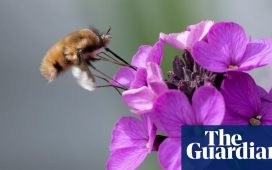More than 1.1 million sea turtles have been illegally killed in the past 30 years, according to new data.
Despite laws to protect them, scientists at Arizona State University estimate that about 44,000 turtles across 65 countries were illegally killed and exploited every year over the past decade.
Jesse Senko, an assistant research professor at Arizona State University and one of the lead authors of the study, said: “The numbers are really high and almost certainly underrepresented by several orders of magnitude because it’s just very hard to assess any type of illegal activity.”
Sea turtles are hunted for food, for use in traditional medicine and to be sold as artefacts, decor or jewellery. Turtle hunting and trafficking is part of a global illegal wildlife market worth as much as $23bn (£20bn) a year, according to the UN.

To establish the magnitude of illegal turtle hunting, researchers examined more than 209 different peer-reviewed journal articles, archived media reports, questionnaires and conservation organisation reports. They looked at all whole turtles or turtle byproducts – heads, tails, shells – that were illegally killed, including those that had then been trafficked or attempted to be trafficked across borders.
The study identified nearly 43,000 turtles as being trafficked between 1990 and 2010, but this is probably a huge underestimate, Senko said.
South-east Asia and Madagascar are hotspots for sea turtle hunting, according to the report, published in the journal Global Change Biology. Vietnam is where most illegal sea turtle trafficking starts, and China and Japan are the most popular markets for illegal turtle products, it found.
Developing countries would continue to supply the illegal turtles as long as higher-income countries continued to demand them as luxury goods, Senko said. “In several cultures, having a stuffed turtle in your house can be a status symbol,” he said.
About 95% of the poached turtles come from two main species: green sea turtles and hawksbill turtles. “The green turtle is considered the most delicious – it’s the one that has the meat, that pulp, people most like to eat,” said Roderic Mast, president of the Oceanic Society, who was not involved in the study. The hawksbill is prized for its beautiful shell, he said.
These species are listed as endangered and critically endangered respectively, but, in the areas they are being targeted, said Senko, there were relatively large and stable populations. This means the effect of illegal trafficking is somewhat contained.
Another more positive finding of the report is its calculation that illegal exploitation of sea turtles has declined by 28% over the past 10 years. The study’s researchers believe the decline is due to increased legal protection.
“I’m happy to see that it has diminished. But I don’t expect the harvest of turtles to ever entirely go away,” said Mast.
This new data on which turtles are being targeted and where could help pave the way for determining how conservationists and legislators should act to protect sea turtle populations in the future, according to Senko.
“We really need to look at those socioeconomic and cultural drivers behind the illegal take,” he said. “Because as long as there’s demand from wealthier countries, poorer countries are going to fill that with the supply of turtles.”







